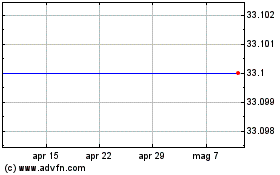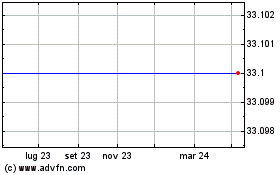The capitalised costs are written down using the straight--line
method over the expected economic life of the patents and licenses
(five years) or the software under development (three to five
years).
Internally generated intangible assets - research and
development expenditure
Expenditure on research activities undertaken with the prospect
of gaining new scientific or technical knowledge and understanding
is recognised in the Consolidated Statement of Comprehensive
Income.
Internal development expenditure is charged to the Consolidated
Statement of Comprehensive Income in the year in which it is
incurred unless it meets the recognition criteria of IAS38
'Intangible Assets'. Technical and other uncertainties generally
have the effect that such criteria are not met. However,
expenditure on development activities, whereby research findings
are applied to a plan or design for the production of new or
substantially improved products or processes, is capitalised if the
product or process is technically and commercially feasible and the
Group has sufficient resources to complete development. The
expenditure capitalised includes the cost of services and
materials, direct labour and an appropriate proportion of
overheads. Otherwise, development expenditure is recognised in the
Consolidated Statement of Comprehensive Income as an expense as
incurred. Capitalised development expenditure is stated at cost
less accumulated amortisation and impairment losses.
Subsequent expenditure on capitalised intangible assets is
capitalised only when it increases the future economic benefit of
the specific asset to which it relates. All other expenditure is
expensed as it occurs.
Only patents have been capitalised as development costs to date,
as the future utilisation of other developments is not sufficiently
determinable or certain.
Property, plant and equipment
Property, plant and equipment is stated at acquisition or
construction cost, net of depreciation and provision for
impairment. No depreciation is charged during the period of
construction. The cost of own work capitalised is comprised of
direct costs of material and manufacturing and directly
attributable costs of manufacturing overheads. All allowable costs
up until the point at which the asset is physically able to operate
as intended by management are capitalised. The capitalised costs
are written down using the straight--line method.
The Group's policy is to write off the difference between the
cost of property, plant and equipment and its residual value
systematically over its estimated useful life. Reviews of the
estimated remaining lives and residual values of individual
productive assets are made annually, taking commercial and
technological obsolescence as well as normal wear and tear into
account.
The total useful lives range from approximately 25 to 33 years
for buildings, five to ten years for plant and machinery and up to
15 years for other furniture and equipment. No depreciation is
provided on freehold land. Property, plant and equipment are
reviewed for impairment at each balance sheet date or upon
indication that the carrying value may not be recoverable.
The gain or loss arising on disposal of an asset is determined
as the difference between the disposal proceeds and the carrying
amount of the asset and is recognised in the Consolidated Statement
of Comprehensive Income.
Impairment
The carrying amount of the Group's non-financial assets, other
than inventories and deferred tax assets, is subject to impairment
testing upon indication of impairment.
If any such indication exists, the asset's recoverable amount is
estimated. An impairment loss is recognised for the amount by which
the asset's carrying amount exceeds its recoverable amount. The
recoverable amount is the higher of fair value, reflecting market
conditions less costs of disposal and value in use based on an
internal discounted cash flow evaluation. The asset is subsequently
reviewed for possible reversal of the impairment at each reporting
date.
The total amount of such impairments, included in the Statement
of Comprehensive Income for this year is an impairment charge of
EUR82.6 million (2011: EUR27.9m).
Leased assets
Leases are categorised as per the requirements of IAS17. Where
risks and rewards are transferred to the lessee, the lease is
classified as a finance lease. All other leases are classed as
operating leases.
Rentals under operating leases are charged to the Consolidated
Statement of Comprehensive Income on a straight-line basis over the
lease term. Lease incentives are spread over the total period of
the lease.
The obligations from operating lease contracts are disclosed
among financial obligations.
For the reporting year, no assets were recorded under finance
leases.
Financial instruments
Financial assets and financial liabilities are recognised on the
Group's Balance Sheet when the Group becomes a party to the
contractual provisions of the instrument. Financial instruments are
recorded initially at fair value net of transaction costs if
changes in value are not charged directly to the Consolidated
Statement of Comprehensive Income. Subsequent measurement depends
on the designation of the instrument, as follows:
Amortised cost
-- short-term borrowing, overdrafts, and long--term loans are held at amortised cost; and
-- accounts payable which are not interest bearing are
recognised initially at fair value and thereafter at amortised cost
under the effective interest method.
Held for trading
-- derivatives, if any, comprising interest rate swaps and
foreign exchange contracts, are classified as held for trading.
They are included at fair value, upon the valuation of the local
bank.
Loans and receivables
-- non--interest bearing accounts receivable are initially
recorded at fair value and subsequently valued at amortised cost,
less provisions for impairment. Any change in their value through
impairment or reversal of impairment is recognised in profit or
loss net of any advance payment held by the group where a right of
offset exists; and
-- cash and cash equivalents comprise cash balances and call
deposits with maturities of less than three months together with
other short--term highly liquid investments that are readily
convertible into known amounts of cash and which are subject to an
insignificant risk of changes in value.
Interest and other income resulting from financial assets are
recognised in profit or loss on the accruals basis, using the
effective interest method.
Inventories
Inventories are stated at the lower of cost or net realisable
value.
Acquisition costs for raw materials are usually determined by
the weighted average method.
For finished goods and work in progress, cost of production
includes directly attributable costs for material and manufacturing
and an attributable proportion of manufacturing overhead expenses
(including depreciation) based on normal levels of activity.
Selling expenses and other overhead expenses are excluded. Interest
is expensed as incurred and therefore not included. Net realisable
value is determined as estimated selling price for silicon wafers
or polysilicon less all estimated costs of completion and costs to
be incurred in marketing, selling and distribution.
Contingent liabilities
Provisions are made for contingent liabilities where there is an
obligation at the balance sheet date, an adverse outcome is
probable and associated costs can be estimated reliably. Where no
obligation is present at the balance sheet date no provision is
made, although, where material, the contingent liability will be
disclosed in a note.
Current and deferred taxes
Current tax is the tax currently payable based on taxable profit
for the year, including any under or over provisions from prior
years.
Deferred income taxes are calculated using the liability method
on temporary differences. Deferred tax is generally provided on the
difference between the carrying amounts of assets and liabilities
and their tax bases. However, deferred tax is not provided on the
initial recognition of goodwill, nor on the initial recognition of
an asset or liability unless the related transaction is a business
combination or affects tax or accounting profit.
Deferred tax on temporary differences associated with shares in
subsidiaries is not provided if reversal of these temporary
differences can be controlled by the Group and it is probable that
reversal will not occur in the foreseeable future. In addition, tax
losses available to be carried forward as well as other income tax
credits to the Group are assessed for recognition as deferred tax
assets.
Deferred tax liabilities are provided in full. Deferred tax
assets are recognised to the extent that it is probable that the
underlying deductible temporary differences will be able to be
offset against future taxable income. Current and deferred tax
assets and liabilities are calculated at tax rates that are
expected to apply to their respective period of realisation,
provided they are enacted or substantively enacted at the balance
sheet date.
Changes in deferred tax assets or liabilities are recognised as
a component of tax expense in the Consolidated Statement of
Comprehensive Income, except where they relate to items that are
charged or credited directly to equity in which case the related
deferred tax is also charged or credited directly to equity.
Public grants and subsidies
As the German operations are located in a region designated for
economic development, the Group received both investment subsidies
and investment grants. Government grants and subsidies relating to
capital expenditure were credited to the "Deferred grants and
subsidies" account and released to the Consolidated Statement of
Comprehensive Income by equal annual instalments over the expected
useful lives of the relevant assets under 'Other income'.
Grafico Azioni Pv Crystalox Solar (LSE:PVCS)
Storico
Da Lug 2024 a Ago 2024

Grafico Azioni Pv Crystalox Solar (LSE:PVCS)
Storico
Da Ago 2023 a Ago 2024
